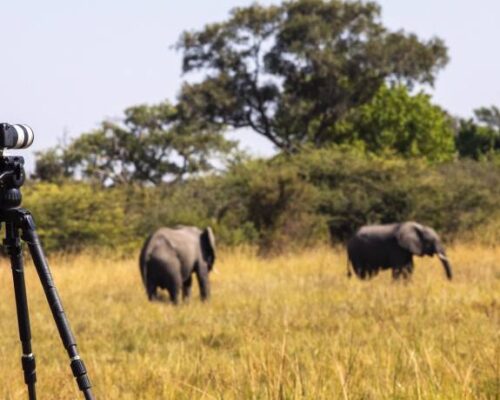India is home to over 70% of the world’s wild tigers, with 2967 tigers found in 51 different national parks across India. Most National parks offer jeep safaris, walking safaris, and boat safaris, but some have recently added a new thrilling experience sighting wildlife during a night at Tadoba jungle stay safari lodge.
Safaris were traditionally only conducted during daylight hours. Still, the forest department has recently allowed night safaris, also known as night patrols, because it assists the forest department in keeping an eye on illegal activities that may occur at night.
It’s unique in that you can see nocturnal animals such as rusty-spotted cats, civets, nightjars, and various owls that you wouldn’t see on a day safari.
Sighting Tiger in Night Safari
![]()
![]()

This is a special time because diurnal animals are finishing their daily activities and returning to their roosts or nests, while nocturnals, who have been thirsty and hungry for long periods, are emerging into the wild. Civets and other nocturnal, arboreal species descend in search of food and water.
It’s an undeniably exciting time of transformation.
What makes a Night Safari unique?

Exploring the wonders of wildlife in the daylight provides a unique sense of privacy and adventure. On the other hand, prowling deep forests in the dead of night is a once-in-a-lifetime experience. Visit our resort in Tadoba for an amazing jungle safari experience.
The evening habits of wild animals are fascinating to observe. Listening to insects, hearing Nightjars call from afar, seeing owls silently perch on a tree, and watching the silhouettes of the untamed terrain are all fascinating. In the dark, a heart-pounding sensation can be felt that is not present in the daylight.
In the dead of night, your chances of spotting a predator are significantly higher. You’ll always have a better chance of photographing a rare natural feature on these safaris.
Nocturnal animals’ adaptations

The eyes and pupils of animals that are active at night are larger. Because they have a larger pupil, they can collect more light, which allows them to see in the dark better than we can. In their eyes, there are more rod cells than cone cells.
Night Safari allows you to see nocturnal birds and animals that are active at night.
As a result, when the torchlight falls on these animals’ eyes, they shine brightly. As a result, if an animal is in the torchlight’s range and it falls on it, you will never miss a sighting.
Key behaviours of wildlife at night
Although many nocturnal creatures have enhanced their senses of smell and hearing, staying undetected at night is still easier. Predators and prey can move around more quietly in the dark.
Predators take advantage of the same darkness to ambush prey more quickly, while victims of animals forage more safely at night. Certain nocturnal species are thought to have developed this behavioUr to reduce fighting over food sources.
Regardless of how many times you visit the forest, exploring the jungle is always full of surprises. However, in our excitement to explore the natural world, we sometimes forget that we have a duty to uphold, which is to keep the environment clean.
For wildlife enthusiasts, nightlife takes on a whole new meaning. They understand that they must travel out into the woods after the sun has set in order to see nocturnal animals. As soon as you board the Gypsy, your heart starts to race, and you start to wonder which animal will appear out of nowhere and provide you with an unforgettable experience. That’s the rush of entering a completely new natural world. You never know what kind of adventures you’re going to get into.



